Before heading off to the store to get yourself kitted out with rope for your camping trip or stocking up your survival gear it’s best to know the inherent qualities of various types of ropes and their uses before parting with your cash.
Bear in mind that ropes last around five years so it is wise to check the tensile strengths as ropes degrade over time – particularly if they are left outdoors.
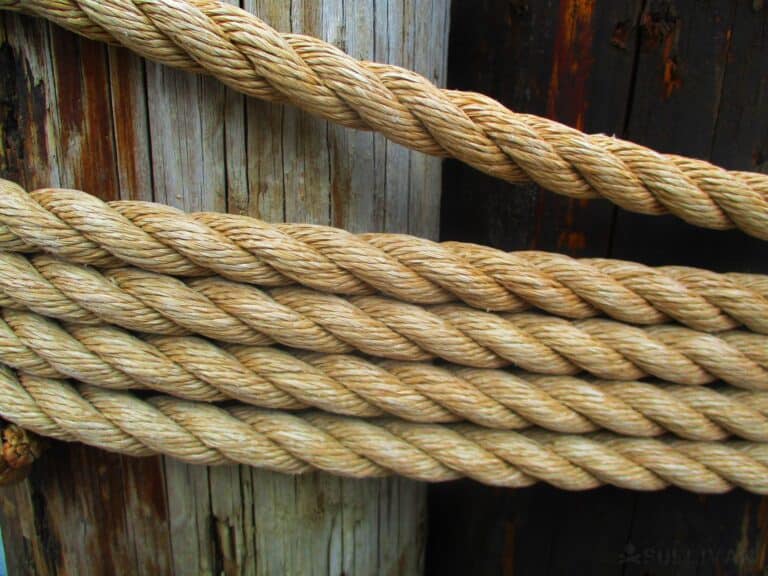
We are going to discuss the different types of ropes one would probably need to keep in a vehicle – particularly when going into off road situations, the ones you should keep in your bug out bag, and even some that are handy around the house.
Table of Contents
Synthetic or Natural Rope?
Natural fiber rope has been around for thousands of years ; prior to synthetic fibers being introduced, it was even used by the ancient Egyptians in many applications.
Plant-based rope is naturally water resistant which makes them an excellent choice for both rugged needs such as fishing nets, to decorative needs around the house. Natural rope can be made from materials such as reeds, grasses, leather, and hair.
Synthetic materials such as ultra high molecular weight polyethylene have great abrasion resistance making them excellent for anchor lines, dock lines, and winch lines.
Different chemicals can make them UV-resistant, since UV rays can degrade the material over time. If you’re using the rope in an outdoor situation, particularly for emergencies, synthetic rope can be the superior product.
Different Rope Types
There are many different types of rope on the market, each with their own strengths and weaknesses.
You’ll often find different rope types associated with specific tasks, for example marine ropes is a category you can search for online, which will provide you with different products that apply to that term.
Let’s take a look at a variety of different rope types you can purchase and what they’re good for…
Disclosure: This post has links to 3rd party websites, so I may get a commission if you buy through those links. Survival Sullivan is a participant in the Amazon Services LLC Associates Program. As an Amazon Associate, I earn from qualifying purchases. See my full disclosure for more.
Tow Strap
Not technically a rope, but tow strap is a strong woven strap commercially finished with stitched in hooks at both ends. While you may feel you would not need this yourself – because you keep your vehicle in peak condition at all times – always carry one so you can help others out.
In off road situations it may need to be combined with the next rope you should have – twisted rope to get the required length.
You never know when crossing rivers how useful this could be if a wheel gets lodged against a stone or the current is stronger than expected or the water deeper than when you tested – you did test right?
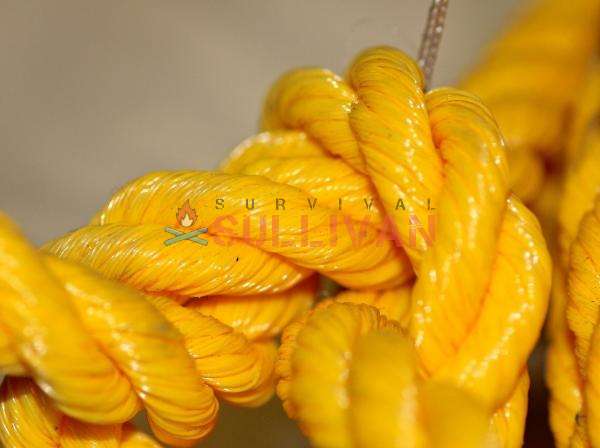
Twisted Rope
Usually three strands are twisted to form a rope, but each strand is made of up multiple fibers. It comes in various thicknesses.
The one in the photo here is made of polyester, which is resistant to rotting and mildew can be used in water situations – often as anchor rope for fishing boats and towing vehicles out of tricky situations in off road conditions where the length of a tow strap is inadequate.
It is worthwhile keeping around 20 meters of this rope in your vehicle.
You can secure the ends of the rope either by applying heat to melt the ends together so they don’t unravel or by binding the ends with a cord.
Using a whipping cord to bind the ends is far safer than the heat-sealing process as if the rope should pull through your hands the sharp edges caused by melting the strands can cut your hand.
The rope usually comes in a bright yellow making it easily visible, and it does sink in water, which can come in handy in certain rescue situations. It does however have a tendency to kink up and it isn’t particularly easy to knot.
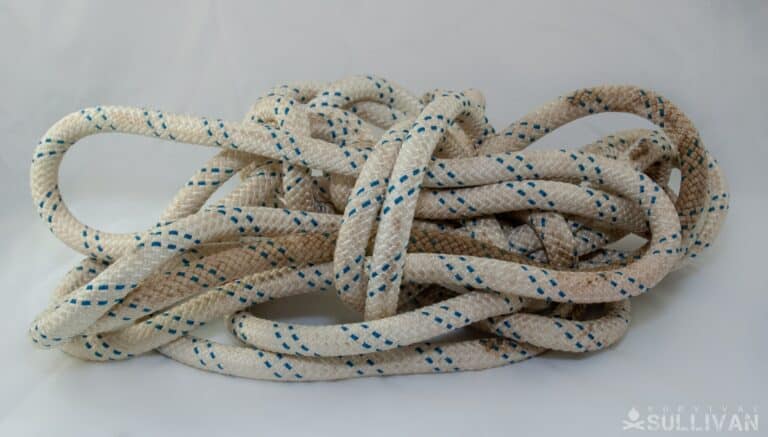
Climbing Rope
Kernmantle rope has a core (kern is the Dutch/German for heart or core) of long twisted yarns enclosed in a mantle or woven exterior sheath. The sheath protects the core from becoming abraded when used in rock climbing, as it is the core that provides the tensile strength.
Dynamic climbing rope has a bit of stretch so a climber doesn’t pick up a spinal injury during a free fall by too abrupt a stop.
Static climbing rope is used for rappelling, hauling gear and top-roping. You can use the dynamic rope instead but it reduces the life of this specialist rope on which your life depends. Climbers are warned never to use static climbing rope when they are the lead climber:
Watch this video on YouTube
Besides climbing, this rope is useful for all sorts of applications, but is a specialist rope and therefore quite pricey so unless you are planning on rock climbing rather leave it out of your survival stash. But then you never know, so go on, if you have the room, store some in your vehicle…
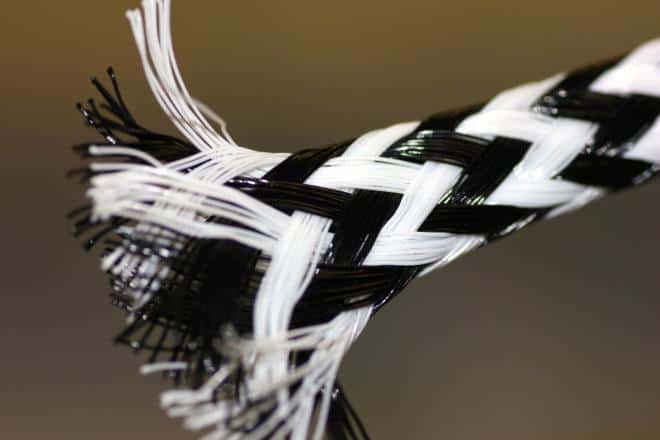
Ski Rope
Usually made of polyester, this rope is very versatile as it can be used for all sorts of things from tying down items to creating a clothesline, fastening a boat so it doesn’t float away or tying you paddle to your canoe.
It doesn’t lose strength when it’s immersed in water unlike nylon that can lose between 15 to 25% of its strength, but it can be a bit slippery. It is constructed by weaving a number of finer strands into a hollow type braided rope as you can see in the photo below.
It is always good to have around 10 meters of this general-purpose rope around for various applications in the home or when out camping.
Coir Rope
Made in Sri Lanka, India and the Maldives, from the fibers found between the hard inner shell of the coconut and the outer coating this hairy brown rope has been used for centuries.
Its main advantage is that it’s about the only natural fiber that is not damaged by seawater and is fairly waterproof so for this reason has been used by local seaman on their boats since antiquity.
It floats on water, which can also have its uses – think of trying to float a line down to a person or trying to catch a top feeding fish.
Coir is one of the most “sustainably” produced ropes – many families in India producing coir rope at home as a cottage industry by using a wheel to which is attached a hook; constant turning of the wheel while adding more coir produces a fairly strong rope that doesn’t unravel.
White coir, which is weaker, comes from the unripe coconuts while the brown coir comes from fully ripe fruit.
Coir rope is used for forming the netting on which the mattress is placed on traditional beds in the above-mentioned countries and for making the traditional hammocks used in Maldives called “joali”. Coir twine is also used for stitching coconut palm leaves together to create thatching.
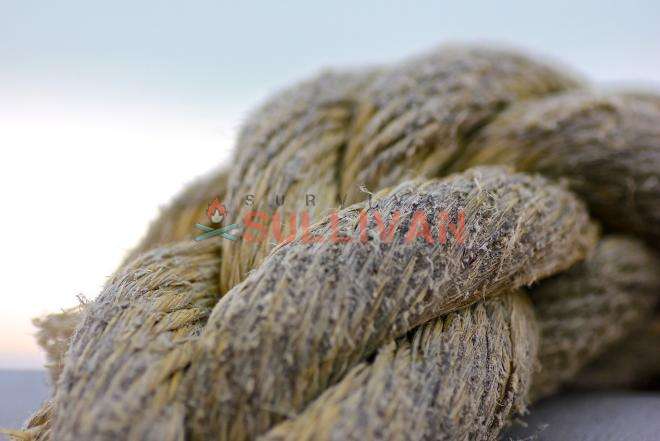
Sisal Rope
Fibers from the Agave sisalana plant are woven into a rope. If your untreated sisal rope is kept indoors it will lose little of its tensile strength but if it is left exposed to the rain, sun and wind you will find it will decompose over time – quite a long time in fact.
I have some that have been outside for twenty years. It was originally used for shark netting to protect bathers – and when discarded landed up in my garden as a friend thought it was quite decorative – then kids found a use for it in swinging from tree to tree playing Tarzan.
It formed slings to carry small wooden cabins from place to place in the yard, then finally it was nailed to posts to form a decorative boundary to a deck.
Sisal rope can be treated by being immersed in a mixture containing tar giving it a darker color, and which can leave oily marks on your hands when new, but the tar treatment makes the rope resistant to seawater and it retains much of its tensile strength over time compared to untreated sisal.
Rot proofing –which doesn’t add weight to the fiber, is no longer carried out, as it makes no difference in humid and hot conditions. Sisal is what we traditionally expect rope to look like – it is natural and looks great for features around the garden or home. The thinner tar treated sisal twine is still used in Africa extensively for thatching.
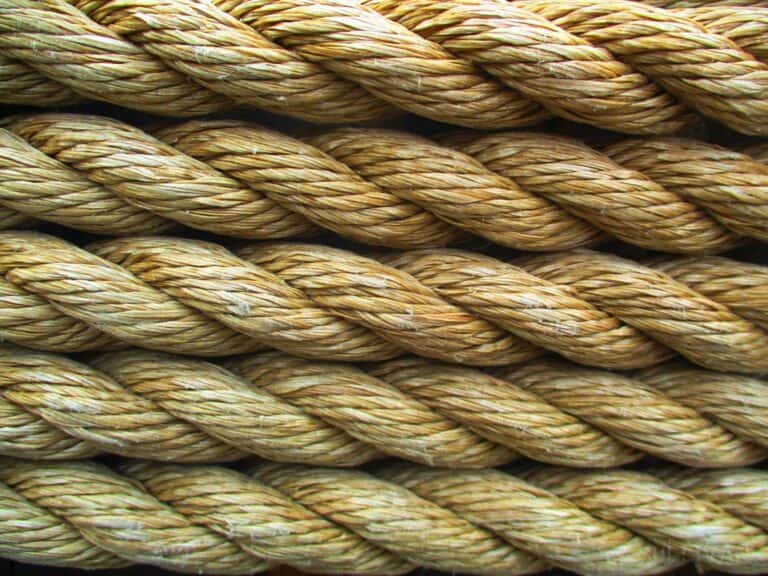
Manila Rope and Hemp Rope
Manila rope, named for the port of Manila in the Philippines from where it is shipped worldwide, is made from the abaca plant, botanical name musa textilis.
It is a close relative of the banana plant, grows to around 10 to 5 feet and the fiber comes from the trunk. Its product is also called hemp rope – this is a misnomer, as the plant is not related to the cannabis sativa plant at all from which hemp rope is made.
The abaca rope is stiffer while hemp rope is softer. The bonus with both manila and hemp rope is that it doesn’t slip easily – holding the knot more effectively than much synthetic cordage.
They are also natural looking and are softer on your hands if working with rope for long periods of time. Hemp and Manila ropes are not used much in survival situations as the rope can rot and is prone to getting mildew if stored wet.
They are useful for tug of war games and as a climbing rope for obstacle courses as they aren’t slippery like many synthetic ropes and absorb perspiration, giving a more secure grip. The thinner ones are useful for lashing down loads.
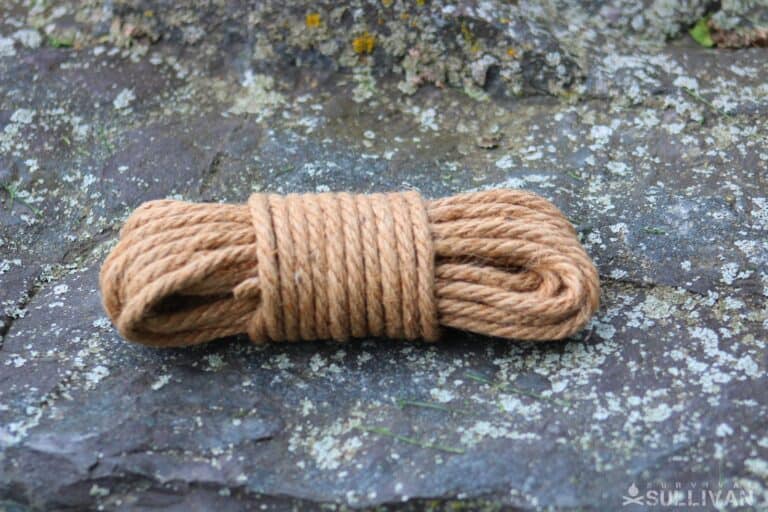
Bungee Cord
This is stretchy and usually comes complete with plastic coated wire hooks at the ends enabling it to be used to lash equipment to roof racks of a vehicle – but beware the elastic tends to wear out over a period of time and will not hold goods securely.
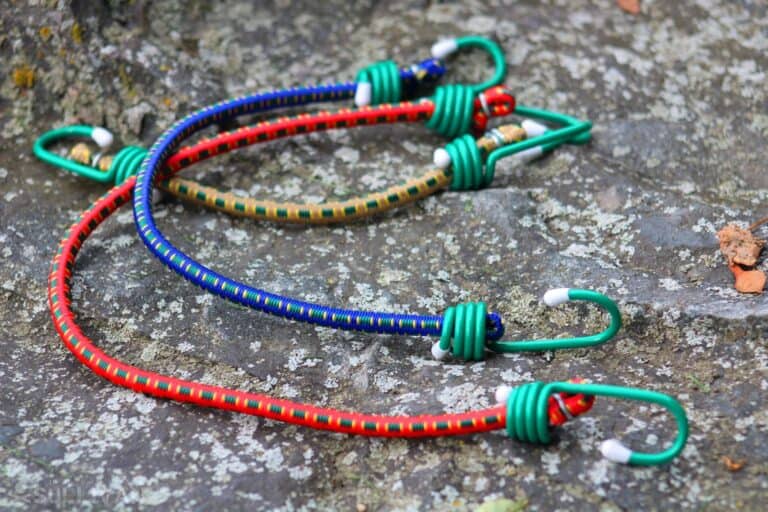
Also beware of using one that is too short and overstretching it as with the precision of a homing pigeon it will snap back and find your face. Always check bungee cords if they have been stored for a while for elasticity.
Watch this video to see a fastening system based on bungee cord that makes securing loads a whole lots more convenient:
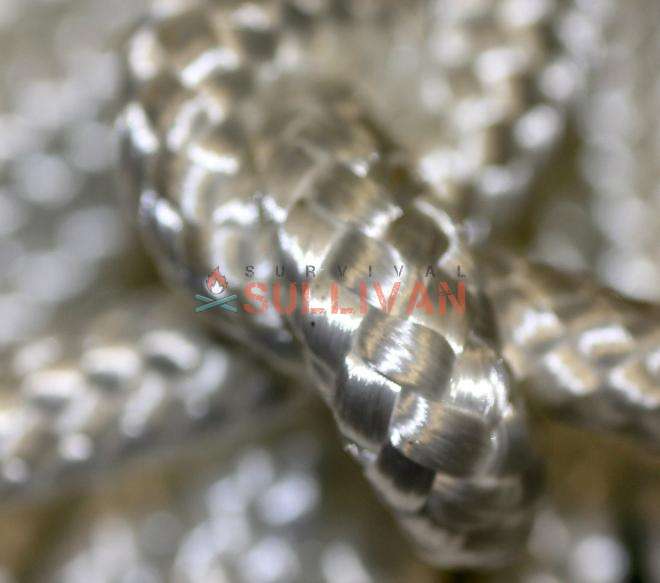
Double Braid Nylon Rope
The inner core of the rope is braided then covered with an outer sheath of braided material resulting in its name. It is exceptionally strong, not prone to kinking and is easy to use.
Double braided ropes hold their shape instead of flattening out under pressure like the hollow core ropes. They also have more resistance to abrasion and come with a bit of stretch. You can find out a little more about braided rope here:
Watch this video on YouTube
Paracord
Type III paracord, also known as 550 cord, derives its name from its use as the suspension lines for parachutes. The kernmantle construction and the use of nylon make it resistant to abrasion. It has become the go-to cord that both military and civilians use.
With a single length of paracord being able to support 550lbs it’s the strongest, lightest (only one eighth of an inch thick) and most versatile rope to have in your bug out bag. It has a reasonable amount of stretch that is important when the rope needs to absorb some shock and takes up relatively little space.
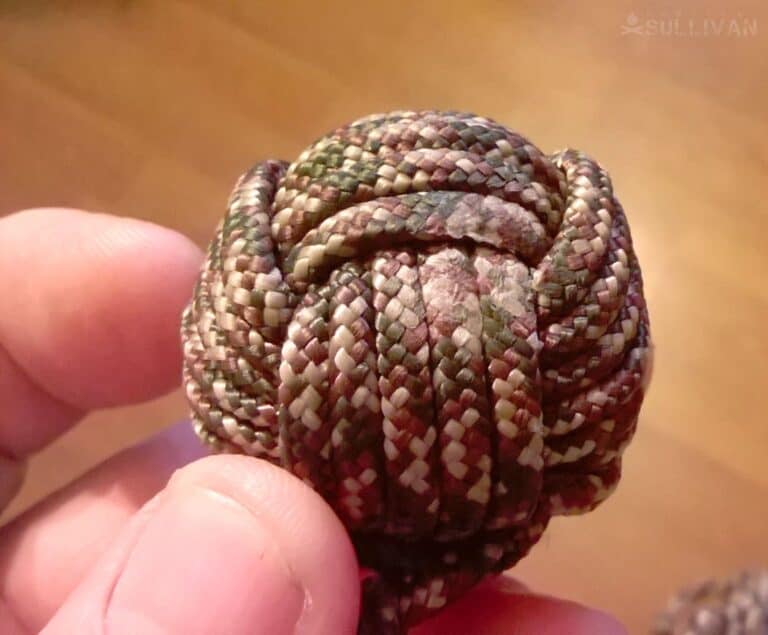
There must be around a hundred things you can use paracord for, from forming shoelaces, extracting fibers for fishing line to lowering goods over a ledge, repairing items – pull the thin fibers out and thread through a needle (a well-prepared survivalist should have one) or even pulling heavy items weighing well over a ton if you weave a number of lengths together to create a stronger rope.
Buy the best paracord, cheaper versions are not going to save your life however you seriously should not think of substituting it for climbing rope.
A concern is the amount of stuff you take with you on how to make a paracord bracelet. Besides looking good it can be whipped off and used in an emergency, and it’s one less thing to go into your backpack.
You can also make a paracord belt that looks pretty good so even if you don’t have time to grab a backpack you will have your paracord with you. You can even braid a dog collar with it leaving your furry friend to carry the paracord supply!
Baler Twine
This is a small diameter rope with a smooth surface that’s used to tie together hay bales. It can be found in both natural sisal or synthetic fibers.
A lot of farmers call it the duct tape of the agriculture world because the uses of this type of rope are endless. The thing diameter makes it extremely tough to break through force, and often you’ll have to cut it to get it off of something it’s wrapped around.
Kevlar Rope
Known as an Aramid rope, due to the aromatic polyamide fibers, this is a ballistic-rated material used by the military and in space. It is a strong synthetic material that is also heat-resistant, making it an incredible choice for a variety of applications. It is stronger than steel and will not move easily.
Nylon Rope
You’ll find nylon rope used for winches and other heavy load-bearing activities. The superior strength is matched by its ability to resist various weather conditions.
Due to the stretchy nature of this rope it can absorb a lot of power and pressure from what it’s attached to. The downside to that is it can be quite dangerous if the rope snaps for any reason. It is not affected by UV light or any kind of degradation from rotting.
Polypropylene Rope
You will find the synthetic polypropylene rope used in aquatic applications such as pools and swimming holes to help cordon off dangerous areas. It is one of the least expensive types of rope that can resist water and mold damage.
This kind of rope can cause friction burns so try not to hold it if it’s attached to an anchor. Throwing a polypropylene rope into the water will cause it to float.
Polyester Rope
Much like nylon, you can use polyester rope for most general applications since it is rot free and can resist moisture. The difference with this type is that it doesn’t tend to stretch which is great for keeping things secure. Don’t throw his rope into the water if you want to keep it since it will sink to the bottom.
Poly Plastic Combo
If you’re building a tree fort or setting up a swing then you more than likely have used this type of rope. The outer strands consist of polyester with the inner consisting of polypropylene plastic.
Expect a very soft rope that is both strong and durable with minimal stretching. It does have an environmental downside, being plastic, as it can fray and shed plastic into the water to surrounding areas.
Rawhide Rope
Rawhide rope is a staple in the equestrian world as they are used as saddle straps, lassos and halters. Additionally, the pet industry uses them for dog toys and other commodities.
You can find it as single braid or double, depending on the task required. Braiding 4 strands together will give you a reata, which is a type of rawhide rope that has ben twisted together. It has incredible strength and durability and can be made using a variety of skins.
Plaited Rope
The ideal type of rope for tying knots, plaited varieties appear more square than other braids. A very strong rope that is not prone to kinking is what makes it excellent for keeping knots secure without ruining the integrity of the overall rope.
To make it you need to braid 3 twisted rope strands which exposes the outer material, making it prone to fraying from friction.
Single Braid Rope
Single braid rope is commonly found in hardware stores and is simply smaller strands braided together to form different thicknesses.
The process involves using a lock-stitch method to help stop any moisture getting inside as well as fraying. Unlike a plaited rope, single braids are created using a circular pattern. Single braid ropes are commonly used in a lot of marine applications.
Diamond Braid
Diamond braided rope is one of the most expensive products on the market. It is very firm and extremely strong, used in every application that other braids are specialized in.
The reason it’s so durable lies in its construction which forms by braiding rope around a strong fiber core. It is not very flexible which makes it stress resistant. Additionally, it is easy to splice since it acts similarly to a hollow rope.
Hollow Rope
Hollow ropes are similar to synthetic single braids but with a difference, the center of the line is hollow. You can commonly find this type of rope used in ski tows and anchor lines since they can resist water and UV damage.
The real benefit in having a hollow rope is that it is easy to splice, meaning you can unweave the ends of the rope and weave them together with the end of another rope to join them.
Jute Rope
A great example of a rope made from naturally sourced fibers, a jute rope is great to use for decorations. Commonly associated with hemp rope(it’s not the same)it is not necessarily meant for heavy duty usage.
If it gets wet then it becomes slippery and may shrink when it dries out. You may also find little fibers scattered here and there as this type of rope can be prone to shedding.
Cotton Rope
More of an indoor craft rope rather than general purpose usage, a cotton rope will decompose over time and can become moldy if left in water or damp areas. This eco-friendly alternative is soft and light as the round braid mitigates any fraying.
How to Make Primitive Rope with Minimal Gear
Making primitive rope from natural materials is easier than you might think. The key in being successful is found in the type of material that you’re using. This can be broken down even further by the quality of the natural resource that you’ve chosen. There are lots of different material types you can use, these can include:
- Tree bark
- Stinging Nettle
- Western red cedar
- Milkweed
- Basswood
Essentially, you want to break down the fibers into strands and then weave them together to create your own braid. Using fresh plants requires that you boil them first to separate the fibers from the plant itself, which can then be dried and formed into a rope.
Using dry plants will have the starches removed and access to the softer fibers becomes easier. Never try to braid rope using wet material as it will dry up and unbraid itself.
Ropes FAQ
Yes, nylon stretches very well but it will not shrink. This is why it is also used in sportswear garments. The only exception would be that cotton can stretch more but is prone to shrinking.
Nylon and abaca are the best rope materials or stretching with minimal shrinking.
Dyneema rope is the strongest fiber on the market made up of ultra high molecular weight polyethylene plastic which is stronger than steel cable.
So there you have it – eleven types of rope for survival situations but probably you are going to use only 3 or 4 depending on your situation – on the short list would be the tow rope, the twisted rope, paracord and maybe the climbing rope – and if it’s just one definitely paracord.
Traveler, photographer, writer. I’m eternally curious, in love with the natural world. How people can survive in harmony with nature has fueled my food safety and survival gardening practices.
At the age of 12, I found a newspaper advertisement for a 155-acre farm at a really good price and showed my parents one Sunday morning. They bought it and I happily started planting vegetables, peanuts, maize and keeping bees with the help of the local labor.
Once I married wherever we moved it was all about planting food, keeping chickens and ducks, permaculture and creating micro-climates. I learned how to build wooden cabins and outdoor furniture from pallets, and baked and cooked home-grown produce, developing recipes as I went along.
